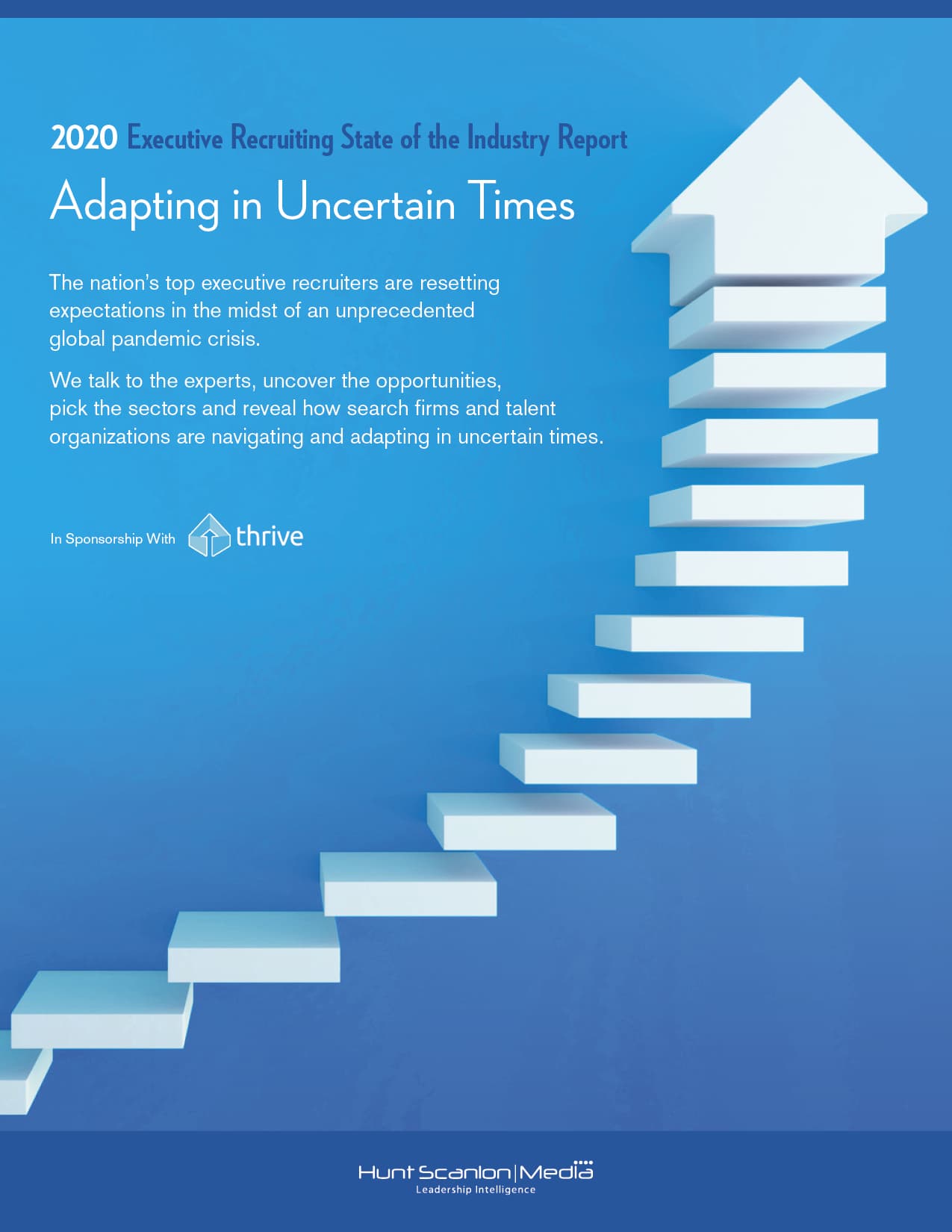Another Tough Week for Workers as Pandemic Crisis Sends Millions More into Unemployment

April 23, 2020 – Americans displaced by the coronavirus crisis again filed for unemployment benefits in historic numbers within the last seven days, with the Labor Department reporting this morning a new surge of 4.4 million claims. Over 26 million people have now filed for unemployment benefits over the past five weeks. Economists were predicting 4.5 million jobless claims for the week. The figures do not take into account millions more who have attempted to file claims in all 50 states, but have been unable to access decades-old claims systems.
“The problem is the economy is still shut down,” Torsten Slok, the chief economist for Deutsche Bank Securities, told NBC News. “The doors are still closed. There is still no smoke coming out of the chimneys in corporate America. Given that it is not surprising that you continue to see significant layoffs.”
 Executive Recruiters & Talent Leaders Navigate Uncertain Times
Executive Recruiters & Talent Leaders Navigate Uncertain Times
Hunt Scanlon’s latest executive recruiting industry sector report will be available in 30 days. This will be the most important search industry sector report that Hunt Scanlon has ever produced! The nation’s top executive recruiters are resetting expectations in the midst of an unprecedented global pandemic crisis. Many expect a significant pause in business, followed by a sharp rebound later this year. We talk to the experts, uncover the opportunities, pick the sectors and reveal how search firms and talent organizations are navigating and adapting in uncertain times. Healthcare, biotech, crisis response, supply chain & logistics and the vast private equity sector are all showing signs of strength – and a big need for talent.
Hear from top talent experts, including: Frederickson Partners; CBIZ CMF; Russell Reynolds Associates; Odgers Berndtson; Options Group; ZRG Partners; Wilton & Bain; Diversified Search; Caldwell; Hanold Associates; True Search; Slayton Search Partners; Coulter Partners; Cejka Search; Solomon Page; Acertitude; McDermott & Bull; Academic Search; Beecher Reagan; Bowdoin Group; Kingsley Gate Partners; Comhar Partners; ON Partners; Perrett Laver; CarterBaldwin; Stanton Chase; Buffkin/Baker; Major, Lindsay & Africa; WittKieffer; Klein Hersh; Furst Group; Invenias; PierceGray; LifeSci Partners & more!
Insert an ad in our report, reserve your copy today and find out how you should adapt your business in these uncertain times.
Most of the job decline came in restaurants and drinking establishments though healthcare and social assistance also took a hit. Economists are expecting the U.S. economy to fall into a recession this quarter, before staging a comeback later in the year after the spread of the virus slows.
How that comeback happens, and whether it occurs as a V-shaped recovery or a longer, drawn out U-shaped recovery remains to be seen. Experts seem to now believe a longer recovery will take place, and that job gains will not come fast or be as easy as simply rehiring displaced staff. Adding to their concerns is the problematic Payroll Protection Program, which is about to be rebooted with additional funding. Massive problems with that lifeline for small businesses has led many of them to turn to mass layoffs as a strategy to stay afloat.
Related: Pandemic Crisis Sends Another 6.6 Million Americans Into Unemployment
The highest insured unemployment rates in the week ending April 4 were in Michigan (17.4), Rhode Island (15.0), Nevada (13.7), Georgia (13.6), Washington (13.2), New Hampshire (12.2), Minnesota (11.9), New York (11.9), Montana (11.7), and Ohio (11.6). The largest increases in initial claims for the week ending April 11 were in Colorado (+58,246), New York (+50,250), Missouri (+10,668), Florida (+10,534), and North Carolina (+2,733), while the largest decreases were in California (-263,342), Michigan (-166,347), New Jersey (-73,416), Georgia (-70,551), and Ohio (-66,874).
Opening America Up Again
President Donald Trump recently suggested several states could ease some of the restrictions they have put in place to mitigate the spread of the novel coronavirus. A week ago, he and his advisers released “Guidelines for Opening Up America Again.” They suggested governors should decide when to ease restrictions. Since then, there has been mass confusion and controversy about testing and timetables, all while the President flip flops daily on backing and not backing state reopening plans.
“At this point it would take a miracle to keep this recession from turning into the Great Depression II,” MUFG economist Chris Rupkey said in an email to Yahoo Finance. “It is going to take years not months to put these pandemic jobless workers back to work at the shops and malls and factories and restaurants across the country … jobless claims are warning that the worst isn’t over yet for the American economy with businesses and consumers alike being sucked down into the abyss of the pandemic recession.”
Even as the number of jobless claims was expected to stay in the millions in the near term, economists broadly expect the figure to steadily decline going forward.
Related: Pandemic Crisis Forces 10 Million Americans into Unemployment
“Another horrendous number, but at least the trajectory is clearly downwards,” Pantheon Macroeconomics economist said in an email. “We anticipate a further decline in claims next week, but the rate of fall of Google searches for “file for unemployment” has slowed, suggesting it will take several more weeks before claims drop below one million. Note that in the single worst week after the crash of 2008, claims rose 665K.”
 Managing Through the COVID-19 Pandemic
Managing Through the COVID-19 Pandemic
The COVID-19 pandemic is causing worldwide public health concerns and widespread disruptions across the global economy, including for businesses and schools. It has caused society to put a pause on public gatherings, sporting events, the arts, restaurants and nightlife, which otherwise would have provided relief during difficult times.
“Claims have moved passed the peak more visibly now, but the cumulative number is still rising significantly,” Morgan Stanley economist Jan Kozak wrote in a note Wednesday. “The rise in the cumulative number will be due to the massive backlog of claims that are waiting to be processed.”
Nomura economist Lewis Alexander echoed Ms. Kozak’s prediction. “While the labor market remains under severe strain, states that imposed lockdowns relatively early are seeing claims activity improve somewhat,” he wrote in a note to clients April 17.
Claims have declined over the past two weeks but remain at an extraordinarily high level, analysts for the research consultancy High Frequency Economics wrote in a note. “That will likely continue over coming weeks as shut down orders remain in place or are extended, and businesses continue to lay off or furlough workers.”
Related: Unemployment Claims Surge as COVID-19 Pandemic Crisis Deepens
Contributed by Scott A. Scanlon, Editor-in-Chief; Dale M. Zupsansky, Managing Editor; and Stephen Sawicki, Managing Editor – Hunt Scanlon Media











